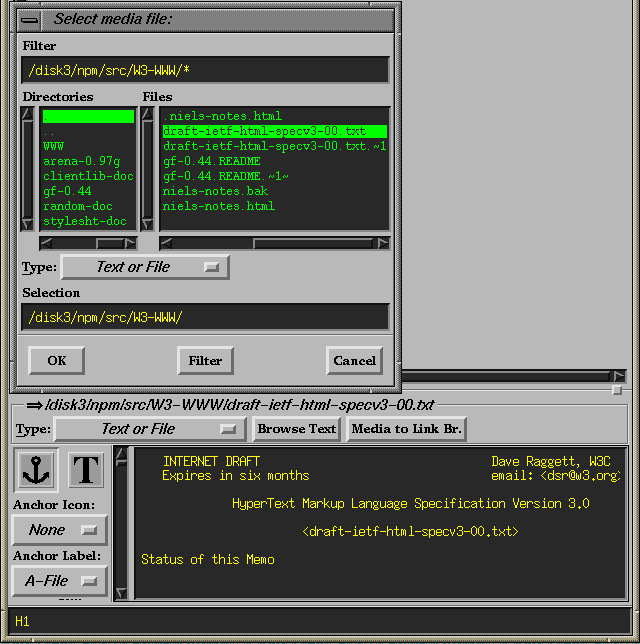 |
For smaller files whose types are not one of the aforementioned recognizable media types in WWWeasel, the application will attempt to display the text of the file in the text display/editing area. The given selection may be inserted into the document as an anchor if there is an associated file; if there is text in the text display/edit area, it may also be inserted into the document ``in line''. Similar to the way image media may be inserted either as anchor or ``in line'' in WWWeasel, text media may be inserted as anchor, or ``in line'' text. The text media display panel has two icons, one for anchors, and one for ``in line'' text to indicate the kind of insertion that will take place upon issuing the ``insert'' command. Similarly, double-clicking on either icon will automatically insert the data into the document without having to explicitly invoke the ``insert'' command.
The text media panel also contains a pop-up menu which allows certain operations to be performed on the text edit/display window:
As an example of using plain-text media, figure 10 shows the text media browser displaying an Internet Engineering Task Force request for comment (RFC) - such files are often available over the internet in plain-text format. As displayed, the RFC document is ready for insertion into the engineer's notebook as an anchor, thus providing a link to a plain text document in the notebook entry.